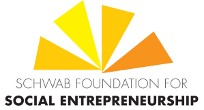Below are brief descriptions of some of the winners of this recent 2012 award by the Schwab Foundation. Photos and a complete listing of award winners are also available.
WASH
Lo Chay – 1001 fontaines pour demain (Cambodia)
Using sand filtration and solar-powered water purification technology, 1001 fontaines provides clean, affordable drinking water to over 50,000 people at a price of USD $0.01/liter. To encourage local ownership, village entrepreneurs are trained to sell and distribute the water as well as maintain the water production site.
Albina Ruiz – Ciudad Saludable (Peru)
Ciudad Saludable has turned waste collection into a profitable enterprise. Working in partnership with municipalities, it has organized over 1,500 waste collectors, creating employment and improving health and living conditions for over 6 million people. In the districts where Ciudad Saludable’s microenterprises work, waste collection payment rates are over 80%, compared to 40% in neighbourhoods with government-run trash collection.
Jack Sim – World Toilet Organization Ltd (Singapore)
The World Toilet Organization (WTO) is committed to improving toilets and sanitation conditions throughout the world. Through its franchise, SaniShop, WTO trains people from poor communities to be sanitation entrepreneurs and sales agents, thus creating jobs and sustainable and scalable business models for delivering low-cost, high volume sanitation solutions.
Gary White – Water.org (India, Africa)
Water.org has successfully demonstrated that the poor can move from being beneficiaries to customers. Water.org underwrites the start-up costs microfinanceinstitutions incur developing water and sanitation loan products, and provides expertise in how to structure the loans. Since the launch of WaterCredit in 2007, more than 350,000 people have access to safe water.
Joe Madiath – Gram Vikas (India)
Working in isolated and impoverished areas of India, where many lack potable water and proper sanitation, Gram Vikas works with villagers from the most marginalized tribes and castes. It requires program participants to pool together village resources to improve infrastructure and sanitation. Gram Vikas helped more than 10,000 families build low-cost facilities for safe drinking water and improved sanitation.
Amitabha Sadangi – International Development Enterprises India (IDEI) (India)
IDEI provides micro irrigation solutions to farmers with its treadle pump and drip irrigation systems. The drip irrigation system is for farmers living in arid or water scarce regions. The technology saves up to 50-70% water and increases crop yield by 30-40%. In order to make these technologies available to farmers, IDEI has worked to build supply chains and credit mechanisms for rural farmers.
IAP/HOUSEHOLD ENERGY
Simon Henschel – Sunlabob (Southeast Asia)
Sunlabob brings renewable energy technologies to off-grid areas by installing solar stations, solar home systems and village hybrid grids. To encourage local enterprise development, Sunlabob trains village technicians to maintain, recharge and rent out solar lanterns. In addition, Sunlabob provides consultancy services, expanding internationally into Uganda, Cambodia and Afghanistan through franchise agreements
Renat Heuberger – South Pole Carbon Asset Managament (Switzerland)
South Pole Carbon creates solutions in the fields of climate change and renevable energies. By providing access to finance through international carbon markets, the company has enabled over 250 projects worldwide ranging from renewable energy to waste treatment and forestry, thereby reducing millions of tons of CO2 and creating thousands of jobs worldwide. With “Gold Power”, South Pole Carbon has launched the first global renewable energy label.
Kristine Pearson – Lifeline Energy (Africa)
Lifeline Energy addresses energy poverty for poor and vulnerable women and children through the distribution of solar and wind-up prime radios, MP3-enabled lifeplayers, lights and energy sources. Since its inception in 1999, the organization has distributed over 450,000 self-powered products, mainly in sub-Saharan Africa, providing
continuous access to information, education and light to more than 10 million people.


